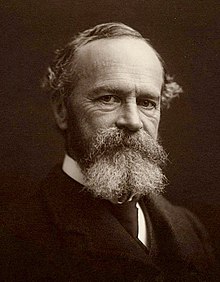Alexander Shulgin, Psychedelia Researcher, Dies at 88
By BRUCE WEBER JUNE 7, 2014

Alexander Shulgin in his home laboratory in Lafayette, Calif.,
He created almost 200 chemical compounds
CreditAnthony Pidgeon/Redferns
Alexander Shulgin, a chemist who specialized in the creation of and experimentation with mind-altering substances, and who introduced the controversial drug popularly known as Ecstasy for potential therapeutic use, died on Monday at his home in Lafayette, Calif., east of Oakland. He was 88. The cause was cancer, his wife, Ann, said.
Dr. Shulgin, whose interest, as he put it once, was “in the machinery of the mental process,” was both a rogue and a wizard, a legitimate scientist and a counterculture hero.
Over more than four decades, working generally within the law (if occasionally on the edge), trying out his concoctions on himself, his wife and a few friends, and publishing his results, he was the creator of almost 200 chemical compounds capable of rejiggering the quotidian functions of the mind.
Dr. Ecstasy JAN. 30, 2005
As
The New York Times Magazine cataloged Dr. Shulgin’s output in 2005:
“stimulants, depressants, aphrodisiacs, ‘empathogens,’ convulsants, drugs that alter hearing, drugs that slow one’s sense of time, drugs that speed it up, drugs that trigger violent outbursts, drugs that deaden emotion — in short a veritable lexicon of tactile and emotional experience.”
His work resulted in patents — his drugs have been used in treating
hypertension, reducing
nicotine cravings and addressing senility, among other things — but it has also been appropriated by recreational users, sometimes to dangerous effect.
In 1967, one of his compounds, popularly known as STP, whose effects include hallucinations and a sense that time has slowed down, was deployed in high doses by San Francisco thrill seekers, sending dozens, if not hundreds, to emergency rooms with fears that they would never return to normal.
Dr. Shulgin had something of a peekaboo relationship with the authorities. On the one hand, he had a strong relationship with the Drug Enforcement Administration; Bob Sager, formerly head of the agency’s Western Laboratory, was a close friend.
Dr. Shulgin often advised drug agents, served as an expert witness in drug trials, wrote a reference work on controlled substances used by law enforcement and for many years was licensed by the D.E.A. to do research on Schedule I drugs, those identified as having no clearly defined medical use and a high potential for abuse.
On the other hand, he sometimes ran afoul of the drug agency.
Many of the compounds he worked with were not originally illegal because they had not existed until he created them, but once they did exist and had gained a public reputation, the drug agency often designated them Schedule I.
In 1993, the D.E.A. raided his lab, and he was fined $25,000 for violating the terms of the Schedule I license and had to turn it in.
Dr. Shulgin is probably best known for his re-synthesis of the drug MDMA, which had first been
patented in 1914 by the German drug manufacturer Merck and later abandoned because no appropriate use of it had emerged.
In 1978, two years after he first made the drug in his laboratory and tried it on himself, he published a paper (with another chemist, David Nichols) that declared that MDMA induced “an easily controlled altered state of consciousness with emotional and sensual overtones.”
He thought it could be therapeutic in reducing anxiety and other emotional problems.
Some therapists indeed found that it encouraged rapid improvement in some patients, but after MDMA migrated to recreational use — and became known as Ecstasy, or X — the D.E.A. classified it as a Schedule I drug.
It was banned in the mid-1980s, at a time when Nancy Reagan’s “Just Say No” campaign against drug use was at its peak.
In recent years research on its potential uses (for example, in the treatment of traumatized war veterans) has re-emerged.
Alexander Theodore Shulgin, who was known as Sasha to friends, was born in Berkeley, Calif., on June 17, 1925. His parents were teachers, and he was a precocious student, entering Harvard at 16. He left college to join the Navy during World War II, serving in Europe.
He told The Times that
his interest in the way the mind works dated to his military service, when a nurse gave him orange juice before he had surgery for a thumb infection. He found undissolved crystals in the bottom of the glass and, assuming they were the remains of a sedative, fell unconscious. It turned out that the crystals were sugar, and the way his mind had tricked him provoked a lifelong curiosity. He later earned a doctorate in biochemistry from the University of California, Berkeley.
It was in 1960, while he was working for Dow Chemical, that Dr. Shulgin had his first psychedelic experience.
He used the drug mescaline, and an epiphany resulted — that it was possible to chemically extend the horizons of perception.
“I understood that our entire universe is contained in the mind and the spirit,” he said. “We may choose not to find access to it, we may even deny its existence, but it is indeed there inside us, and there are chemicals that can analyze its availability.”
It was an idea he spent his career exploring, earning the freedom to do it when he created one of the world’s first biodegradable insecticides and traded the patent for Dow’s support in his drug research. (Eventually the relationship became too uncomfortable for the company, and the connection was severed.)
Dr. Shulgin was the author of five books that documented his work, including two, self-published in the 1990s, that focus on particular families of chemical compounds — “PiHKAL,” short for “Phenethylamines I Have Known and Loved,” and “TiHKAL” (“Tryptamines I Have Known and Loved”). Both, which he wrote with the aid of his wife, describe his work in detail and his experiences in sampling it.
“I feel absolutely clean inside, and there is nothing but pure euphoria,” he wrote of MDMA in “PiHKAL.”
“I have never felt so great or believed this to be possible. I am overcome by the profundity of the experience.”
The D.E.A. was not pleased about the books. In an interview with The Times in 2005, a spokesman for the agency’s San Francisco Field Division said, “It is pretty much our opinion that those books are pretty much cookbooks on how to make illegal drugs.”
Alexander Shulgin, Psychedelia Researcher, Dies at 88 - NYTimes.com:
Link:
http://www.nytimes.com/2014/06/08/us/alexander-shulgin-psychedelia-researcher-dies-at-88.html?nl=todaysheadlines&emc=edit_th_20140608&_r=0






